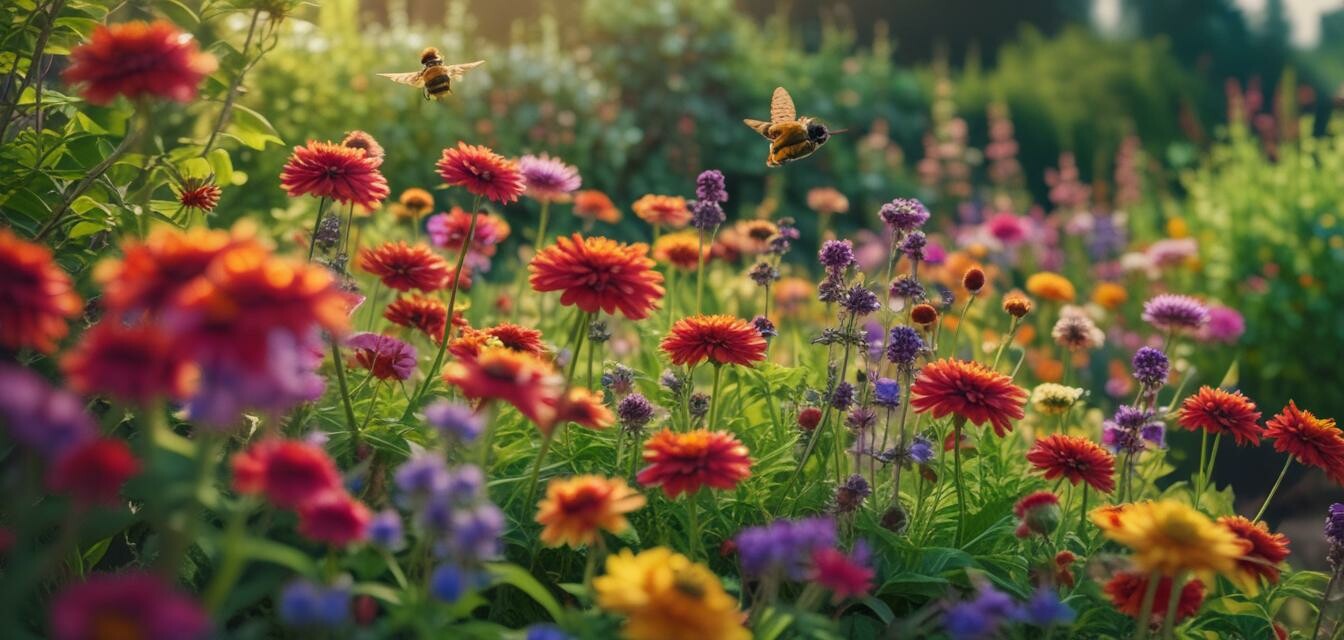
Designing a Pollinator-Friendly Garden
Key Takeaways
- Choose a diverse range of native plants to attract various pollinators.
- Ensure flowers bloom at different times for continuous food supply.
- Incorporate safe habitats and water sources.
- Avoid synthetic pesticides to protect pollinators.
- Educate others about the importance of pollinators in gardening.
Creating a garden that attracts and supports pollinators is not only beneficial for the environment but also enhances the beauty of your outdoor space. By selecting the right plants and fostering a welcoming habitat, you can play a major role in sustaining local biodiversity. This guide will provide practical tips on how to design a pollinator-friendly garden that is both beautiful and functional.
Understanding Pollinators
Pollinators, such as bees, butterflies, hummingbirds, and bats, are vital for the fertilization of many fruits, vegetables, and flowers. They facilitate the reproduction of plants by transferring pollen. The decline of pollinator populations in recent years has raised alarms about the health of ecosystems and food supplies. Therefore, promoting habitats for these creatures is essential.
Why is a pollinator-friendly garden important?
- Enhances local biodiversity.
- Improves garden productivity.
- Strengthens the ecosystem.
- Provides educational opportunities about nature.
Essential Elements to Include
To create a pollinator-friendly garden, consider incorporating the following essential elements:
| Element | Description |
|---|---|
| Native Plants | Native species are adapted to the local environment and are more attractive to local pollinators. |
| Diverse Flower Types | Include a variety of shapes and sizes of flowers to cater to different pollinator species. |
| Water Source | A shallow dish or birdbath provides water for thirsty pollinators. |
| Safe Habitats | Mulch piles, rock gardens, and other natural spaces create shelter for pollinators. |
| Food Sources | Glorious blooms throughout the growing season offer nectar and pollen. |
Choosing the Right Plants
Selecting the right plants is key to attracting different pollinators. Here are some great options:
Recommended Plants for Pollinators:
- Lavender
- Sunflowers
- Pollen-rich wildflowers (like clovers and daisies)
- Bee balm
- Milkweed (attracts butterflies)
Creating Blooming Seasons
Choose plants that bloom at different times to ensure that pollinators always have something to feed on throughout the growing season. This encourages a robust and active pollinator population in your garden.
Designing Your Garden Layout
Next, consider the layout of your garden. A well-designed garden can maximize the impact of your efforts:
- Group Similar Plants: Clustering plants together makes it easier for pollinators to locate food sources.
- Create Layers: Incorporating ground covers, mid-size plants, and taller flowers provides multiple feeding zones.
- Use Color Wisely: Bright colors can attract pollinators, so use a mix of hues to draw them in.
Garden Maintenance for Pollinators
Maintaining a pollinator-friendly garden requires careful attention. Avoid chemical pesticides and herbicides that harm beneficial insects. Instead, use organic methods to manage pests.
Natural Pest Control Tips:
- Encourage natural predators (like ladybugs and lacewings).
- Plant companion plants to deter unwanted pests.
- Use insecticidal soap or homemade sprays for infestations.
Additional Features to Enhance Your Garden
To further support pollinators, consider adding the following features:
| Feature | Benefits |
|---|---|
| Composting bins | Provides fertile soil and supports healthy plant growth. |
| Log piles | Offers habitats for bees and other insects. |
| Garden sculptures | Add visual interest and serve as perches for pollinators. |
| Bee hotels | Encourage solitary bees to make a home in your garden. |
| Ponds and water features | Provide crucial hydration and attract more wildlife. |
Promoting Awareness
Educate others about pollinators and the importance of maintaining their populations. Social media, community gardening events, and local workshops are great ways to spread the word. Encourage friends and neighbors to create their own pollinator-friendly spaces.
Conclusion
By designing a pollinator-friendly garden, you're creating a sanctuary for vital species that support our ecosystem. The beauty of a diverse landscape rich with life complements the practical benefits of enhanced garden productivity. Start planning your pollinator paradise today!
Pros
- Supports biodiversity and strengthens ecosystems.
- Enhances garden beauty and productivity.
- Encourages environmental awareness in your community.
- Provides habitats for various wildlife species.
Cons
- Initial setup may require time and investment.
- Maintenance efforts are necessary to keep the garden thriving.
- Possible attraction of pests if not managed properly.
For more gardening tips, be sure to check our Buying Guides and explore the range of plants available in our Greenhouses & Plant Protection category.